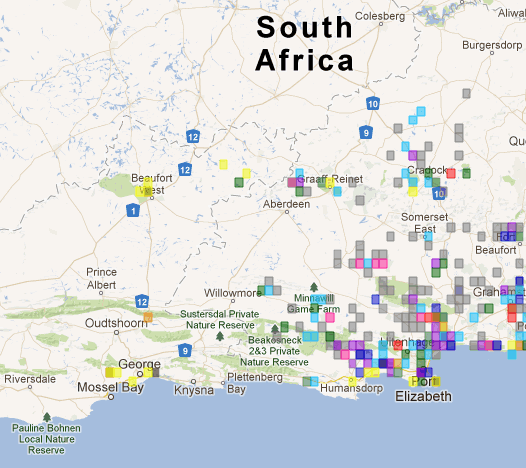This species is
relatively common in the eastern parts of southern Africa, and has
been reported sporadically from slightly further west, around George.
However, the first Southern African Bird Atlas Project wrote off sightings
from this part of the world as confusion resulting from the
Red-billed Firefinch. But these species are quite easily
distinguished in the field... courtesy of the very obvious difference
in bill color in the males.
It is interesting to note on the atlas maps from SABAP2 the species occurs very infrequently along the southern African escarpment – the Nuweveldberge, e.g. from Graaf Reinett to Beaufot West. I think the clue is the in use of habitat – for instance, it is conspecific with Jameson's Firefinch further north, but occupies a different habitat – montane thicket and grasslands. I think this explains the species presence on Blue Hill Nature Reserve – with the veld now 1 year old, there is a lot of grass, especially in the mountain valleys.
 |
| South African distribution of African Firefinch (SABAP2 map) |
Either way, we are
gracious to this individual for its visit, especially to the nets (as
it may well have been overlooked otherwise).
The African Firefinch
is the exclusive host of the Black Widowfinch (Dusky Indigobird), so we are hoping for one these to rock up next!




what a great event. A handsome bird. The little white spangles in the axilla are delightful. I assume they have some mating display application, so hidden in normal attitude
ReplyDeletePreciosa ave.Saludos
ReplyDelete